
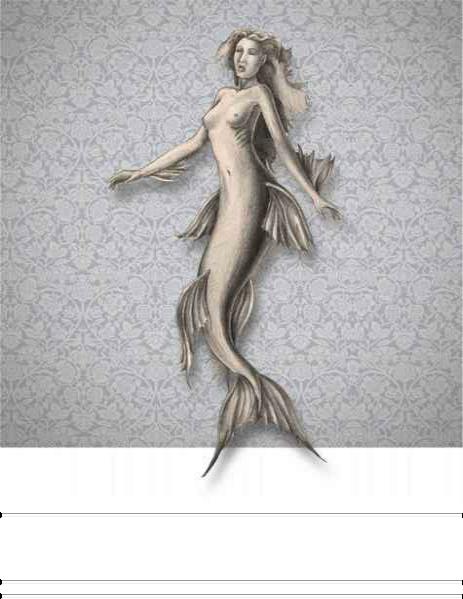
SIREN OCEANUS
KINGDOM Animalia
PHYLUM Vertebrata
CLASS Mammichthyes
ORDER Caudata
FAMILY Sirenidæ
GENUS Siren
SPECIES Siren oceanus
THE SIREN, NEREID, AND mermaid are oft confused. The folklore of these creatures predates the conventions of the scientific method; nonetheless, the legends denote an accurate account of some of the evolutionary aspects regarding their species. I will begin with the homogenous nature of them as a species, differing only as dogs may differ in breed––albeit significant differences, indeed.
The siren was described as a bird in ancient times; only later did it become a woman of the water. There was, at some point in the past, a need to make specific distinctions between the water-human and the bird-human animals. Whether it was an error in classification or that the siren
evolved into an aquatic mammal is not well understood. Nereids, or naiades, share many of the traits of the
deeper ocean-born species, but they are far more human than the mermaid; and, in many cases, they are nearly entirely human, save the distinct physiological aquatic attributes. This would explain their geographic preference for shallow, fresh water.
The mermaid (the female of the species Siren oceanus) was less common and certainly more elusive than the siren. It breathed underwater without any need to surface. I speculate the possibility of several variants of the species that exhibit more mammalian traits and therefore required the occasional breath, as do the dolphin and whale. The task of discovering any such animals intact by means of good fortune alone are nearly impossible.
This animal would need to have a fully evolved and substantially unique respiratory system; similar to the gills of a fish but conforming to the structure of the human rib cage. If my theory is correct and there was once indeed an air-breathing mermaid, this would suggest the existence of a vast variety of species still occupying many shapes, sizes, and functions in the depths of our waters.
The pelvis and femur would be robust and generous in length. Considering the large size of the lumbar vertebrae and the thickness of the caudal and anal spines, this particular species of mermaid would have exhibited a greater agility and speed than nearly any other sea animal
hitherto documented. The superficial tendons weave over the muscular tissues, allowing for greater tension, strength, and resistance. The presence of massive muscular tissue supporting all the fin spine regions would grant this animal superiority: a champion in the water.

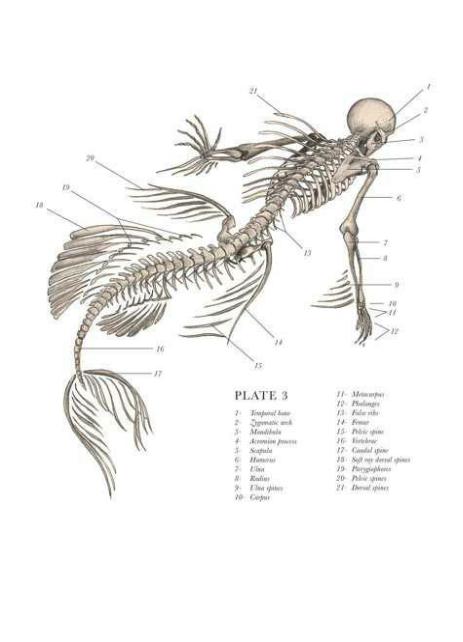
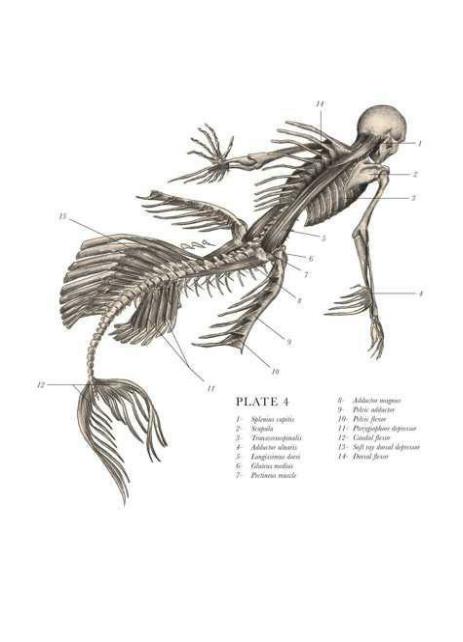
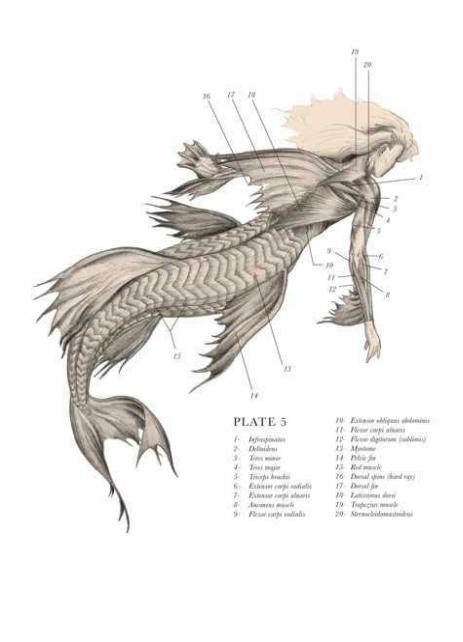
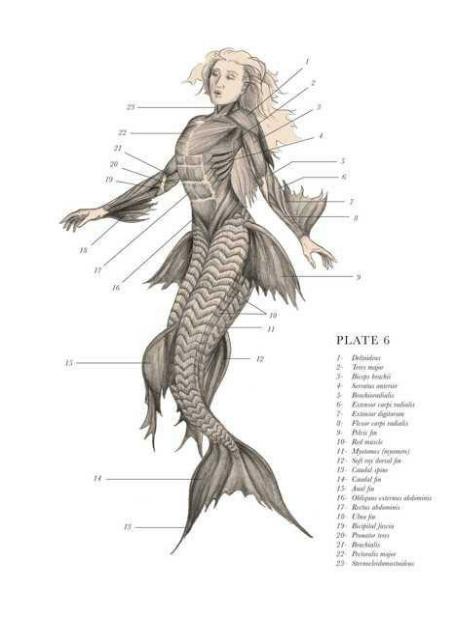
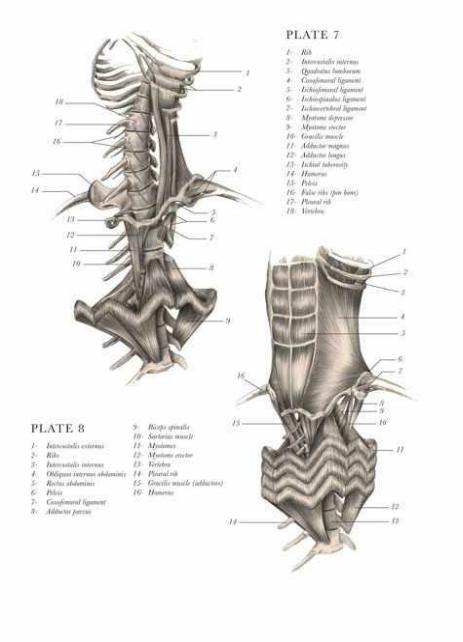
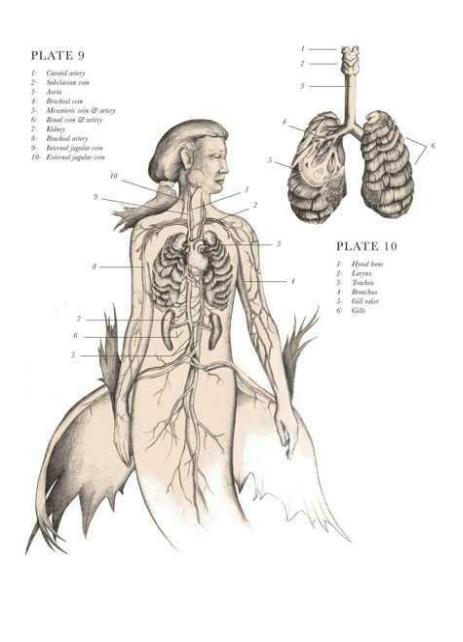
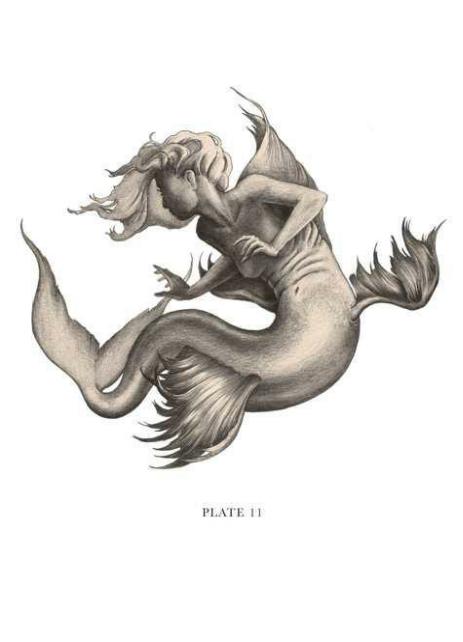
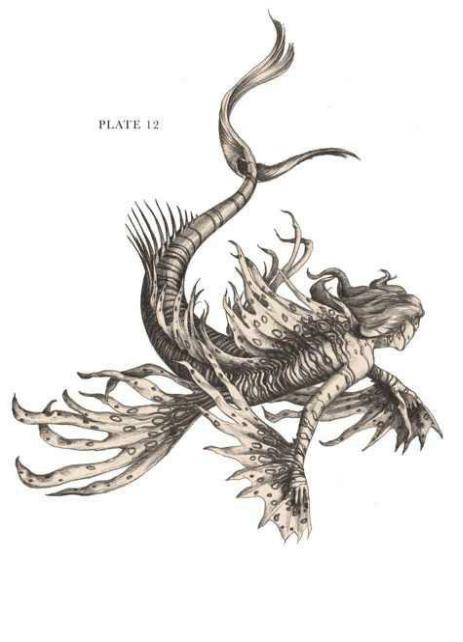

DR. BLACK’S NOTES REFERENCE DIFFERENT KINDS OF SATYRS AND MENTION ONE THAT HE CLAIMS TO
HAVE FOUND IN FINLAND; HOWEVER, THERE ARE NO KNOWN REMAINS OF ANY SPECIMEN THAT
BLACK MAY HAVE STUDIED . HE REFERS TO THE
SATYR IN A JOURNAL ENTRY DATED SEPTEMBER
1906: “THERE ARE PHYSIOLOGICAL ASPECTS OF THIS BEING THAT I, WITH MY LIMITED KNOWLEDGE,
COULD NEVER QUANTIFY—ONLY SPECULATE . I SUSPECT IT HELD A HEAVENLY SONG IN ITS
THROAT, A DANCER ’S WEIGHT IN ITS GAIT, AND A
CHILD’S MISCHIEF.”
